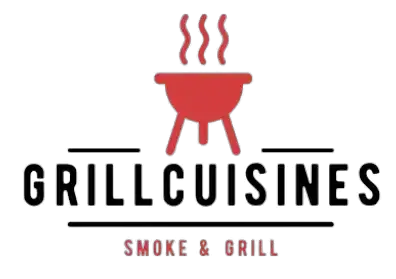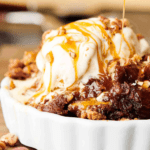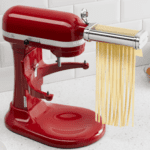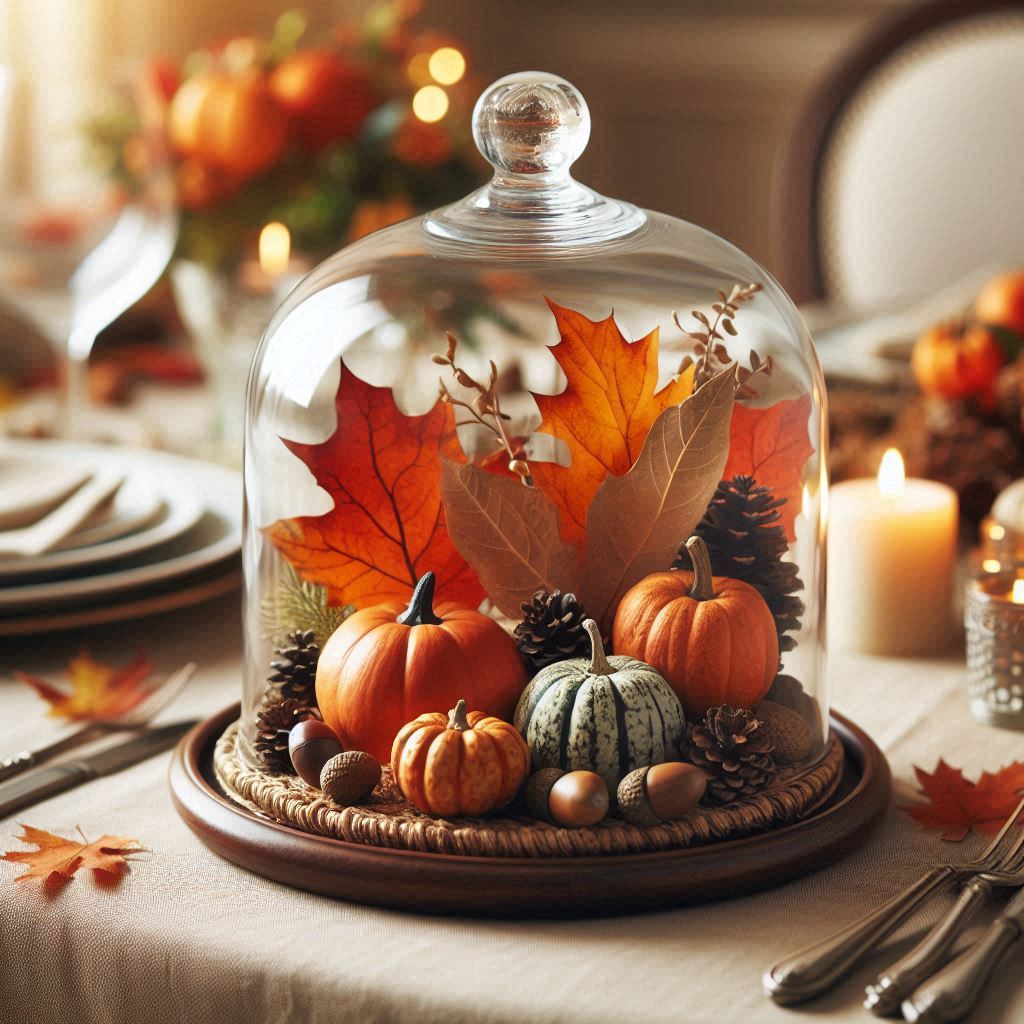Share via:
Both professional chefs and novices alike undoubtedly love using Blackstone griddles for their excellent heat distribution and versatility. But there’s a common issue that often raises eyebrows — Blackstone griddle warping.
This concern, experienced by a subset of users, has raised questions about the griddle’s durability and functionality.
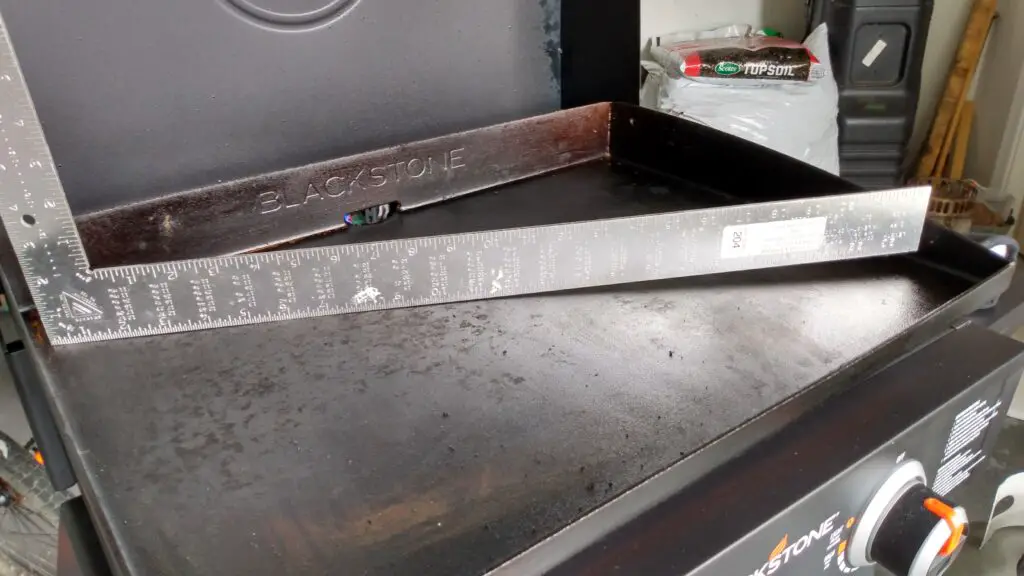

This griddle warping issue primarily arises from the innate behavior of metal. The metal expands with heat and contracts as it cools down, a fundamental principle that often leads to the warping of griddle tops, especially those made of steel.
This warping of flat top can occur during manufacturing and you may notice it when the griddle is used for the first time.
Typically, minor warping is transient, gradually rectifying itself over time as you cook, and doesn’t affect the performance of the griddle.
Exploring the Blackstone Griddle Warping Issues And Customer Experience
As we explore the warping issue with Blackstone griddles, real user stories paint a vivid picture. Many users have faced unexpected deformations while seasoning or cooking for the first time on the griddle, and the steel surface didn’t behave as expected under heat.
These experiences spark debates about what causes this griddle warping. Some people blame high heat during seasoning, wondering if they accidentally pushed the griddle too far.
Others question manufacturing or design flaws that might make these griddles prone to warping. There’s also talk about the steel’s quality and whether it contributes to this issue.


These discussions aim to uncover why these griddles sometimes distort, disrupting what should be a great cooking experience.
WHAT IS WARPING? Understanding the Science Behind Griddle Warping
Warping is when the griddle’s flat surface begins to distort, often resembling a dome or a slight hill or curvature in the center or sometimes at the corners.
It is also known as Blackstone griddle crowning. Basically, it deviates from its perfectly flat characteristic. This can lead to difficulties in cooking, especially when aiming for an even heat distribution across the surface.
Warping issues can indeed occur right from the start, possibly due to manufacturing defects like poor welding or inadequate materials.
If you encounter a warped griddle top straight out of the box, it’s advisable to reach out to Blackstone’s customer support and consider returning the griddle for a replacement.
Attempting to flatten a warped griddle top on your own might not be the best solution and could potentially cause further damage.
Why Does Griddle Flat Top Warp
The nature of metal when subjected to high heat or abrupt temperature shifts plays a pivotal role in warping.
Metals expand when heated and contract when cooled. Such expansions and contractions can lead to warping, particularly in surfaces like griddle tops made of steel.
Extreme or rapid changes in temperature during the cooking process might cause rapid expansions in localized areas, resulting in warping.
A significantly hot griddle exposed to a cooler environment can cause thermal shock leading to warping. Think of it like this – when you quickly expose a hot glass to cold water, it cracks.
The same phenomenon applies to your griddle when it is introduced to a drastic temperature change.
Low-quality metal is another cause of warping. If the griddle was created using substandard metal, it might not withstand the high cooking temperatures, leading to warping over time. Thinly constructed metals like aluminum and copper are more prone to warping due to their malleable nature. Conversely, harder metals such as stainless steel and carbon are more resistant to warping but pose challenges in flattening once they’ve undergone deformation.
How To Fix A Warped Blackstone Griddle?
Some seasoned griddle users often propose several DIY remedies and preventive measures to address the challenge of griddle warping.
First and foremost primary emphasis lies in the process of seasoning, a crucial step in preparing the griddle for cooking.


Be really careful when seasoning the griddle to help stop it from warping. Rather than subjecting the griddle to sudden, intense heat, always use a gradual heat introduction across several sessions.
This slow seasoning process is believed to allow the metal to acclimate to the temperature changes more effectively, potentially reducing the likelihood of warping.
Moreover, the choice of oils or coatings used during seasoning is a topic of considerable discussion among griddle enthusiasts.
Certain oils or substances are favored for their purported ability to create a robust, protective layer on the griddle surface, potentially minimizing the risk of warping caused by repeated heating and cooling cycles.
There are some DIY methods to fix a warped Blackstone griddle without any sophisticated tools or advanced skills.
Keep in mind that these are quick fixes and may not completely restore the original flatness of your griddle, but they should considerably improve its functionality:
These DIY methods often center around modifying the initial treatment of the griddle, focusing on measures that could potentially reinforce the metal’s resilience against warping tendencies.
However, while these strategies are commonly discussed within the community, their effectiveness might vary based on individual experiences and the specific circumstances surrounding griddle usage.
How To Straighten A Warped Griddle
Using Wooden Blocks and Clamps Method
Your Blackstone griddle can be coaxed back into shape with the use of regulated pressure. All you need is a pair of high-quality clamps and two sturdy wooden blocks. Here’s how:
- First, clean your griddle thoroughly and make sure it is dry.
- Next, place the wooden blocks on either side of the warped area on your griddle.
- Important: The next step involves applying significant pressure, so be careful to avoid any potential injury.
- Gently tighten the clamps around the wooden blocks and the griddle. Allow your griddle to stay in that position for a day or two. The regulated pressure helps to slowly reverse the warp caused by heat.
- Finally, release the clamps and examine your griddle. This process can often significantly reduce the severity of the warp.
Applying the Heat and Weight Method
If you have a heat source at your disposal, another method involves applying heat to the griddle and using weight to flatten out the warp:
- Fully clean and dry your griddle before heating.
- Remember: Managing open flame or heat requires safety precautions. Make sure you’re prepared to safely handle the griddle.
- Heat the center of the warped griddle using a burner or an open flame.
- Once it’s heated adequately, place a heavy object on top of the warped area (a cast iron pan would be ideal due to its weight and heat-resistant properties).
- Allow the griddle to cool with the weight in position. As the metal cools, it should contract and flatten under the weight.
Use of a Heat Gun and Hammer
Another popular method that can help rectify the warping issue on your Blackstone griddle involves employing a heat gun and the use of a common household tool – the hammer. This method may be slightly more labor-intensive but can often yield favorable results.
Step 1: Using the Heat Gun
The first step requires using a heat gun to apply heat directly to the warped area of your Blackstone griddle. You should be aiming to evenly distribute the heat across the surface, gradually raising the temperature of the metal.
This process will allow the metal to expand and regain its flexibility for reshaping. Be sure to wear proper safety gear, including heat-resistant gloves, to protect yourself from potential burns.
Step 2: Hammering
After adequately heating the warped area, grab a hammer. Place a piece of wood on the affected area to prevent any direct contact or potential damage from the hammer.
Start hammering gently, as you want to correct the warp, not create any indentations or further damage. This action should start removing the warp as you evenly apply force across the surface.
Note: Be mindful of the force you are using during the hammering process; too much force can lead to denting or even cause more warps.
Step 3: Repeat the Process
If the warp remains, you may have to repeat the process of heating and hammering. Patience is key in this method as certain warpings may require multiple heating-hammering cycles. Always remember to cool your griddle slowly after each cycle, a sudden decrease in heat might lead to more warping!
Preventing Blackstone Griddle Warping: Tips and Tricks
As the saying goes, prevention is always better than cure. With this in mind, minimizing the warping of your Blackstone griddle is all about implementing certain preventative measures.
The good news is, that these are often simple adjustments or additions to your regular griddle use and maintenance routine. Here are some invaluable tips and tricks to keep your griddle warp-free:
1- Maintaining Even Heat Distribution
Whenever you’re using your griddle, ensure heat is evenly distributed across its surface. Pay attention to potential cold or hot spots. This can often be achieved by controlling the intensity of the flame and adjusting cooking techniques as needed. A heat diffuser can also be a useful tool to encourage more uniform heating.
2- Avoid Rapid Heat Changes
Quick changes in temperature are one of the most common causes of warping. Avoid placing a cold griddle on a hot flame or immersing a hot griddle in cold water, as these rapid changes can lead to warping. Instead, allow your griddle to cool down naturally after use before cleaning.
3- Select High-Quality Metal Griddles
A griddle’s resistance to warping is greatly dependent on the quality of the metal it’s made of. High-quality metals are less prone to deformation under heat. When buying a Blackstone griddle, opt for premium, thicker gauge models for superior heat retention and resistance to warping.
4- Mindful Cleaning Procedures
It’s tempting to get cleaning done quickly after a long day of cooking, but your griddle benefits from your patience. Abrasive tools and aggressive cleaning practices can damage the surface of your griddle, making it more susceptible to warping. Instead, stick to gentle, griddle-safe tools and cleaners. properly dry the griddle after use to prevent moisture-related warping.
The role of seasoning in preventing griddle wear and warping cannot be overstated. A properly seasoned griddle not only offers a smooth, non-stick cooking surface but also creates a protective layer that stands up against the warping effects of heat. Season your griddle regularly and effectively to keep it in the best possible shape.
Use specific oils or coatings recommended for seasoning. Some users suggest flaxseed oil or specialized griddle seasoning products.
Lastly, always keep your griddle stored in a controlled environment. Extreme weather and temperature swings can contribute to warping.
Use a cover to protect your griddle when not in use and try to store it in a cool, dry place, away from extreme cold or heat.
The Role of Seasoning in Griddle Warping
Seasoning your Blackstone griddle doesn’t just enhance flavor—it plays a critical part in the overall health of your grill, including its resistance to warping.
What Does Seasoning Entail?
Seasoning a griddle refers to the process of applying a layer of oil to its surface and heating it until it smokes. The oil oxidizes and forms a protective layer that not only makes your griddle non-stick but also prevents rusting and ultimately, warping.
How Does Seasoning Prevent Warping?
When you apply heat oil on the griddle, you form a barrier that controls how heat is absorbed and dispersed. This uniform heat distribution is crucial in preventing warping, which often occurs due to uneven or extreme temperature changes.
By seasoning your grill, you’re essentially priming it to handle heat more effectively and efficiently.
Blackstone Griddle Warped Warranty
Blackstone offers a warranty for their griddles, but warranty coverage for warping may vary. It’s essential to review the warranty terms provided by Blackstone to understand what issues are covered and the duration of coverage.
Generally, manufacturing defects are covered, but warping caused by user error or extensive use might not always be included.
It is stated that If your Blackstone griddle’s top doesn’t flatten out even after ten uses, reach out to the Blackstone support team. Ensure to include current images showcasing the warping.
Wrap Up
In conclusion, understanding the factors that contribute to your Blackstone griddle warping is essential in both prevention and remedy. Remember, it’s not just about the heat, but also the quality of metal, uneven heat distribution, rapid temperature changes, and faulty cleaning techniques that could lead to this issue.
But remember, you don’t have to throw your warped griddle out. If your griddle doesn’t return to its flat state, reach out to Blackstone’s customer support for assistance. It’s also crucial to register and activate your griddle’s warranty on the Blackstone website.
Given that a griddle is a significant investment intended for long-term use across generations, ensuring its proper maintenance is key to extending its lifespan.
Related Articles
Why Is My Blackstone Rusting [TOP 7 REASONS]
Why Is My Blackstone Griddle Flaking [Quick Fixes]
4 Expert Solutions To Tackle Blackstone Uneven Heating!
Mold on Blackstone Griddle (6 STEPS TO CLEAN MOLDY GRIDDLE)
How to Clean Blackstone Griddle After Cooking (5- Steps)
I am a writer, editor, and publisher of Grillcuisines.com – an online blog dedicated to sharing grilling tips, accessories, and recipes to encourage more people to get outside and grill.
I’m off to find out the different types of grill foods, their seasons, and how to conduct outdoor cooking properly. I’ll also show you some of my grill-worthy cooking tools & accessories!
